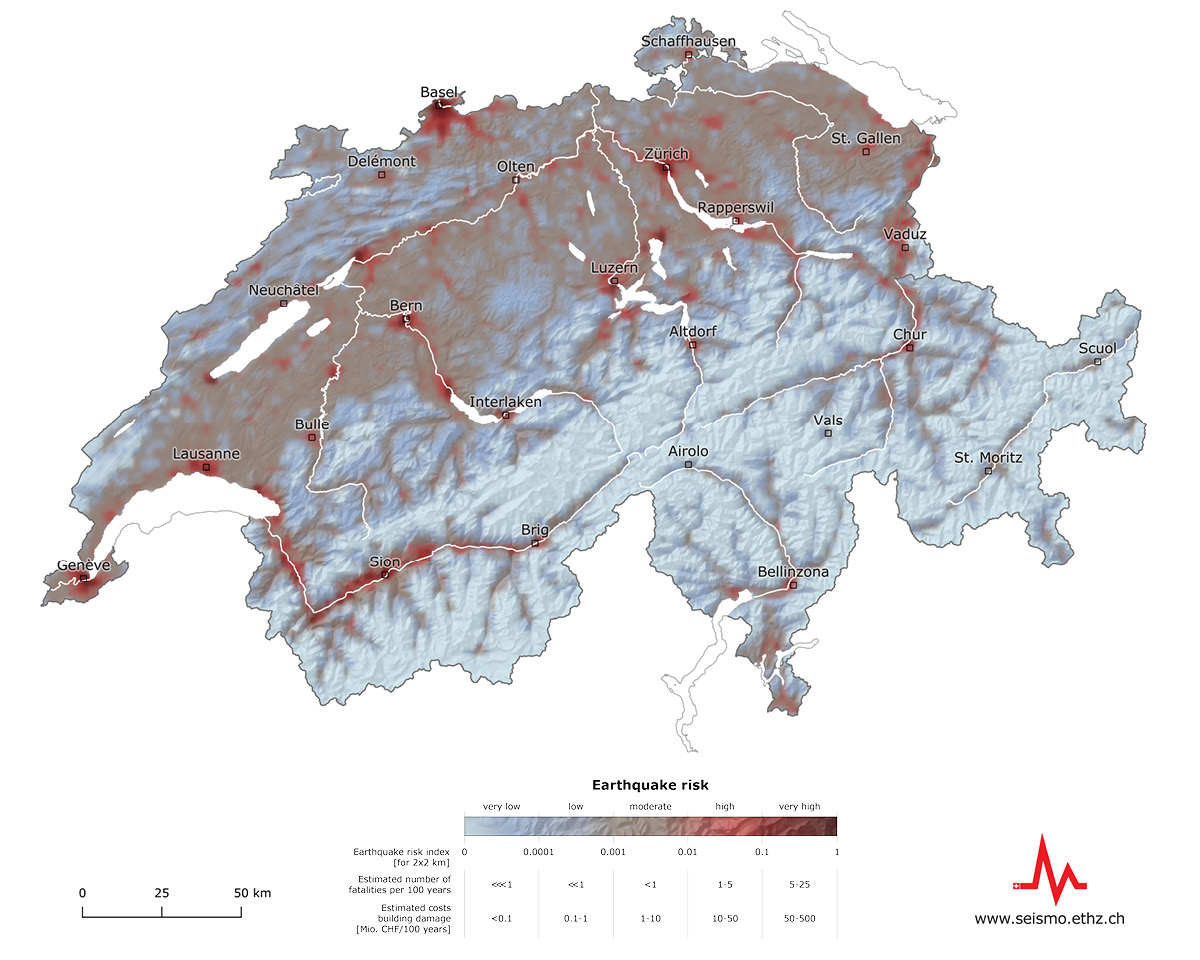ERM-CH23

|
Phase 1 (2023-2027). Understanding earthquake risk at the national and sub-national levels is essential for developing effective policies and measures to mitigate this risk. The Earthquake Risk Model of Switzerland (ERM-CH23), developed between 2027 and 2022, and released in early 2023, is the culmination of a multidisciplinary effort to provide, for the first time, a comprehensive assessment of the potential consequences of earthquakes on the Swiss building stock and population. Developed as a national model, ERM-CH23 relies on very high-resolution site amplification and building exposure datasets, which distinguishes it from most regional models to date. Multiple loss types are evaluated, ranging from structural/nonstructural and contents economic losses, to human losses, such as fatalities, injuries and displaced population. Phase 2 (2023-2027). ERM-CH23 includes a variety of products designed to meet the needs of a very diverse audience. Earthquake scenarios quantify the losses caused by individual events and are typically used by cantonal authorities in preparedness exercises and help raise awareness of seismic risk among the general public. Rapid impact assessments, conducted in the immediate aftermath of an earthquake, help manage the consequences of a damaging earthquake. In the hours and days following an earthquake, they are the foundation upon which the Blue Light organizations rely in their response efforts. Probabilistic seismic risk calculations for individual building portfolios assess the financial exposure of entities responsible for insuring property owners in Switzerland. In the second project phase, the model undergoes further improvements, such as the introduction of daytime-dependent loss calculations and updates to administrative community layers. Model maintenance and data curation, ensuring compatibility with the ever-evolving OpenQuake software, and finally calculating different products to meet the needs of different stakeholders are important aspects of this phase. Additionally, outreach efforts and the development of learning modules are important activities to enhance understanding and preparedness. |
|---|---|
| Project Leader at SED | Prof. Stefan Wiemer, (coordinator: Philippe Roth) |
| Funding Source | SED / ETHZ, BABS, BAFU |
| Duration | Phase 1 (model development): 2017 – 2023, phase 2 (operational phase): 2023 – 2027 |
| Keywords | Seismic risk, preparedness, awareness, mitigation, event management |
| Research Field | Earthquake Hazard and Risk |
Wiemer S., Papadopoulos A., Roth P., Danciu L., Bergamo P., Fäh D., Duvernay B., Khodaverdian A., Lestuzzi P., Odabaşi Ö., Fagà E., Bazzuro P., Cauzzi C., Hammer C., Panzera F., Perron V., Marti M., Valenzuela N., Dallo I., Zaugg S., Fulda D., Kästli P., Schmid N., Haslinger F. (2023). Earthquake Risk Model of Switzerland (ERM-CH23). Swiss Seismological Service, ETH Zurich. doi: 10.12686/a20